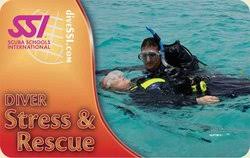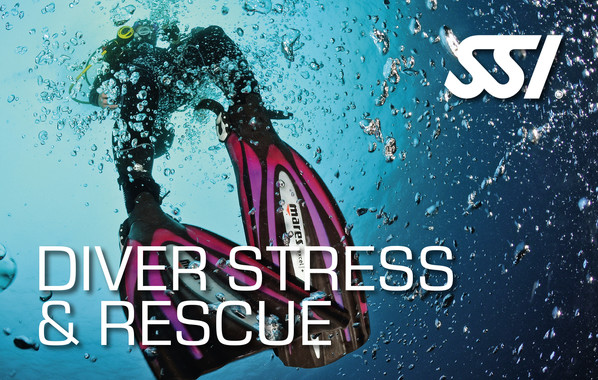As far as our diving adventures is concerned and as much as possible, we would want it to be smooth running. However, there are some instances that emergency situations arise and that addressing that problem in the fastest and safest possible way is paramount. While we may have some experience on first aid and assuming we already are a certified and experienced Open Water Diver or Advanced Open Water Diver, equipping ourselves with the proper rescue skills would only mean one thing: you must enroll and sign-up for a Rescue Diver Certification Course.
The Rescue Diver Course

Regardless if it is a minor or major diving emergency situation that can be situated on land, surface or underwater, the Rescue Diver Course will teach you a variety of rescue skills that addresses a specific problem.
Sanctioned by the Scuba Schools International (SSI), the rescue diver course is divided into 3 segments, namely: knowledge development, rescue skills exercise and rescue scenarios.The knowledge development is done in a classroom setting where your SSI instructor will explain to you the different approach in solving a specific problem, as well as the overall management when an incident happens. Managing an emergency, addressing equipment failure and how to rescue panic and unconscious diver, both at the surface and underwater, are just some of the lessons taught during the lecture.
One of the most awaited part in the Rescue Diver course is the simulation of a real-life emergency. Your instructor will give you a situation where you will apply all the skills learned during the training. Now here’s the thing: if you make the wrong approach, your instructor (or any assigned person/diver who needs to be rescued) will really grab whichever part of your body as if simulating a real panicked diver. But don’t panic. It is just to let you realize the consequences if you do not follow procedures and to prepare yourself for the real thing.
PREVENTION is BETTER than Responding to a Situation
Do not hope for an emergency situation to happen. And it doesn’t mean that while you are equipped with rescue skills, you just have to wait for that real emergency to happen so that you can apply your skills first hands. That is a BIG NO NO.
What you should do instead is to be observant, identify a situation that could possibly lead to an incident and address that situation before becoming a full blown emergency. The saying “Prevention is better than Cure” is highly applicable to Rescue Divers. A perfect example to this is constant monitoring (especially with regards to air consumption) and frequent visual to your buddy and other members of the group. This can greatly reduced the possibility of any untoward incident.

Photo courtesy from allatsea.net
Being a rescue diver is not just a certification, but really quiet a challenging role. Just think of this: the life of a distressed diver highly depends on how you address the problem and efficiently deal with the situation. At the end of the day, nothing is more rewarding than saving a fellow diver’s life. More so if you have prevented an accident to happen. And finally, to compliment your rescue diver skills and after making the required number of dive logs, you may soon consider taking up the Divemaster Certification Course. This can significantly enhance your over-all diving skills, dive management and supervision. Becoming a divemaster is like living the life of a professional diver where only few have ever dream of.
Requirements and Schedule
You should be a certified Advanced Open Water Scuba Diver, logged 30 dives and have some basic swimming skills. Age requirement should be at least be 15 years of age. Junior Rescue Diver Certification will be given for ages 12 to 14 years old.
Tentative 3-day schedule for the Rescue Diver Certification Course:
- Day 1 – Knowledge development through lecture and video presentation
- Day 2 – Self Rescue Skills and Rescue Exercises in Open Water
- Day 3 – Respond to rescue scenarios in open water, make an emergency plan and final exam
Rescue Diver Certification Card

After you have successfully completed all the requirements, your Rescue Diver application will be sent to SSI for processing. Within a month, you will receive your certification card that will indicate your certification level, name, student number, date of certification and the name of your SSI instructor. You have to remember that you need your certification card when you rent or purchase scuba equipment and accessories. Further, dive shops may require you to present your certification card when you rent or airfill your scuba tanks.
Video courtesy from Pro Development Institute (PDI)



Add Comment